Mac notebook and other portable computing is covered in The 'Book Review. iPad, iPod, iPhone, and
Apple TV news is covered in iOS News
Review. All prices are in US dollars unless otherwise noted.
News & Opinion
Products & Services
Software
News & Opinion
A Defense of Apple's 'Impossible to Replace' 2011
iMac Hard Drive
Hardmac's Lionel weighs in on the iMac hard drive issue (see
last week's Mac News Review for more
details), noting that it has several consequences, but most importantly
that it's now impossible to replace the hard drive of the 2011 iMac without going through an
Apple Retailer to get an identical disk, which (of course) will be sold
at a price three times higher than anywhere else.
However, in Apple's defense, Lionel observes that the main goal of
this change is to monitor disk temperature as precisely as possible,
which is absolutely necessary in a confined architecture such as the
iMac's slim case, and the only way to keep the fans running at the
right speed to cool down the disk while keeping the computer as quiet
as possible, without the fan blowing at full speed all the time.
Lionel believes that Apple went with its "Out of Bandwidth"
temperature monitoring system to avoid using SMART, which prevents data
access momentarily when it is used. The iMac checks drive temperature
"very often", so this avoids a potential performance issue.
In his original report about the roadblock to replacing hard drives
in the new 2011 iMacs due to a proprietary temperature sensor (above),
Hardmac's Lionel expressed confidence that there must be a way to
deactivate or to trick the problematic sensor. He follows up saying
that it didn't take long to find a solution, which is that provided by
Apple on models available with an SSD: short-circuit pins 2 and 7 on
the power supply cable.
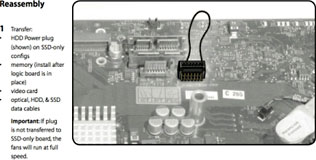 Lionel goes on to note that the first
iteration of the temperature sensor issue was introduced in the
2009 iMac, with Apple
initially using connectors added to most hard drives for the purpose of
programming and testing the disk. The drawback was that each hard drive
manufacturer had its own connector, so the 2011 model uses a new system
with all information now going through pin 11 of the power supply
connector, normally used to light-up a LED during disk activity. In
order to change the use of that pin, specific firmware was needed,
which explains the reason that only disks sold by Apple in the iMac
don't have problems.
Lionel goes on to note that the first
iteration of the temperature sensor issue was introduced in the
2009 iMac, with Apple
initially using connectors added to most hard drives for the purpose of
programming and testing the disk. The drawback was that each hard drive
manufacturer had its own connector, so the 2011 model uses a new system
with all information now going through pin 11 of the power supply
connector, normally used to light-up a LED during disk activity. In
order to change the use of that pin, specific firmware was needed,
which explains the reason that only disks sold by Apple in the iMac
don't have problems.
Lionel observes that this was quite a radical choice, far from
established standards, but in the end it should not cause any big
problem in replacing hard drives in these computers.
Publisher's note: Without temperature monitoring, hard drive heat
could become an issue in the iMac's confined spaces, so replacing the
hard drive is done at your own risk. If you do elect to do so, look for
a drive that runs cool. dk
Link: It Is Currently
Impossible to Replace the Hard Drive of the 2011 iMac
OWC Elaborates on iMac 2011 Hard Drive Replacement
Restrictions
OWC blogger Larry expands on some questions, context, and additional
technical details concerning the now infamous 2011 iMac hard drive
replacement issue, affirming up front that he thinks these are
absolutely the best iMacs ever and noting that the following model
drives were found in systems OWC has received:
- Seagate ST3500418AS 500 GB 7200 RPM Barracuda 7200.12 7200 RPM 16
MB SATA 3 Gbp/s
- Seagate ST31000428AS 1 TB 7200 RPM Barracuda 7200.12 7200 RPM 32 MB
SATA 3 Gbp/s
- Western Digital WD1001FALS 1 TB Caviar Black 7200 RPM 32 MB Cache
SATA 3 Gbp/s
Larry notes that you don't get to pick what brand hard drive, cache,
model, etc. are installed at the factory, but Apple iMac Specs confirm
all factory hard drives are 7200 RPM and cautions that the base $1,199
iMac model doesn't have any drive configuration options and is only
offered with the 500 GB capacity drive.
OWC has tested the new iMacs with a variety of drives and reports
that regardless of which drive was factory installed, any of the
different drives received in any of the iMacs worked fine in any other.
Larry further notes that each hard drive manufacturer currently has
different pins for the available thermal sensor line found on today's
hard drives, which means owners of 2010 iMacs can more easily replace
their factory hard drive with a retail drive, as long as they stick
with the same make (although he cautions that it's still a major job
just to open up these machines, independent of other challenges), but
if they want to use a different make drive, you'll need to make some
modifications.
However, while OWC has done other testing with external options, it
is so far inconclusive, so they can't say anything is 100% definite yet
other than either Apple has custom firmware in its drives that enables
something, or Apple has firmware on the drives that it looks for to use
what is there anyway, with the bottom line being that workaround
options are in play, and with further testing, OWC should be able to be
confident in one solution or another, noting that only a very small
percentage of iMac users are ever going to want or need to replace
drives in their computers, observing that Apple has made that hard
enough as it is, but for the few, it didn't need to be this hard.
Link: Further Explained:
Apple's iMac 2011 Model Hard Drive 'Restrictions'
An Elegant Solution for the 2011 iMac Hard Drive
Replacement Problem
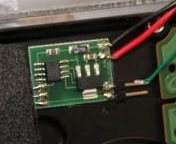 Hardmac's Lionel notes that difficulties associated with
replacing the hard drive in 2011 iMacs led to an initial workaround of
short-circuiting some pins in the power supply of the hard drive, but
that was a bit kludgy, and that some of his readers from Gravis, a
German reseller, developed a more interesting and elegant solution - a
little component to replace the sensor inside the hard drive that can
measure the temperature and send it to the motherboard to regulate fan
speed. It's called
cBreeze (English
translation by Google Translate) and will work with any 2009 or
later model of iMac, and is projected to be widely available in
June.
Hardmac's Lionel notes that difficulties associated with
replacing the hard drive in 2011 iMacs led to an initial workaround of
short-circuiting some pins in the power supply of the hard drive, but
that was a bit kludgy, and that some of his readers from Gravis, a
German reseller, developed a more interesting and elegant solution - a
little component to replace the sensor inside the hard drive that can
measure the temperature and send it to the motherboard to regulate fan
speed. It's called
cBreeze (English
translation by Google Translate) and will work with any 2009 or
later model of iMac, and is projected to be widely available in
June.
Link: An Easy Solution
to Replace the Hard Drive in a 2011 iMac
BBC Looks into 'Evangelical Frenzy' Over Apple
Christian Apple aficionados are inclined to joke about "the church
of the Macintosh"* but the BBC's Alex Riley reports that a team of
neuroscientists scanned the brain of an Apple fan and it showed that
the brand was stimulating the same parts of the brain as religious
imagery does in people of faith.
Secrets of the Superbrands explores why companies like Apple and
Google have grown explosively over the past few years and elicit
passionate loyalty from their customers, and is to be broadcast on BBC
Three at 2100 BST on Tuesday, 17 May. Or watch online via iPlayer (UK
only).
* Publisher's note: For instance, see The 10 Commandments of the Church of Macintosh:
Speak No Ill of the Mac and The 10
Commandments of the Church of Macintosh: Mac OS is the Jesus, Allah,
Nirvana, and Buddha of Operating Systems by Rodney O. Lain, which
we published over a decade ago. dk
Link: BBC Three Looks into
'Evangelical Frenzy' over Apple
Firefox 3.5 End of Life Announced
PR: mozilla.dev.planning blogger Christian Legnitto provides
this summary of Mozilla's Firefox update
roadmap:
- Current working Firefox 3.5 EOL plan can be found @
https://wiki.mozilla.org/Releases/3.5_EOL
- We have no intention to release another 3.5 update (but if we need
a chemspill before the plan is implemented we will discuss it)
- We have a plan with investigation work and a backup plan if the
investigation says our desired plan is unworkable
- For both plans the end result is sending 3.6 as a minor update for
3.5 users . . . the difference is merely the implementation
method and timetable
- No real actions need to take place until June, so there aren't
pressing requirements that could impact the new release process
- Firefox 3.6 has different considerations and a draft plan will be
sent around in due time
He adds:
There has been a of discussion about 3.5 EOL and we have a plan
(already being implemented) documented @
https://wiki.mozilla.org/Releases/3.5_EOL . The plan was created with
input from the security team, QA, product, and RelEng.
The main takeaways are:
- We want to do this quickly
- We want users to self-select into running Firefox 4 if at all
possible (dangle the carrot)
- We don't think self-selection will ultimately get us to the place
we need to be
- We will force 3.6 on 3.5 stragglers not choosing to update to
Firefox 4 or 3.6 (give them the stick)
- We feel comfortable making the major update choice for users
because a) the versions are very similar and b) we'd rather lose a
small amount of miffed users than leave a large amount of users
vulnerable
...we intend to ship Firefox 3.6.18 (the update shipping at the same
time as Firefox 5) to 3.5 users when it is released. This is highly
dependent on the outcome of https://bugzilla.mozilla.org/show_bug.cgi?id=650030
If the bug is not resolved in a timely manner we will instead do an
advertised prompt to Firefox 5, let it sink in, and then update users
to 3.6.18 via automatic update.
Publisher's note: System requirements for Firefox 3.6 appear to be
identical to those for Firefox 3.5, so 3.5 going end-of-life shouldn't
be an issue for anyone. Firefox 4 no longer supports OS X 10.4 or
PowerPC Macs, making upgrading problematic to users of either, although
there is an option: TenFourFox is a
custom port of Firefox 4 to PowerPC hardware and works with OS X
10.4 and 10.5. Mozilla recently released the first beta of
Firefox 5, which is scheduled for public release on June 21.
dk
Link: Firefox 3.5 EOL
Plan
Products & Services
OWC SuperSlim Turns Any 9.5mm SATA Slot Loading
Internal Optical Drive into an External Drive
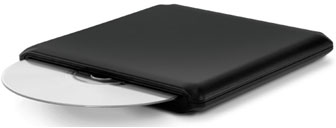 PR: Other World
Computing (OWC) has announced the OWC SuperSlim, a USB 2.0 bus powered
optical drive enclosure for turning any 9.5mm SATA slot loading
internal optical drive, even those with mounting tabs, into an external
Plug and Play CD, DVD, and/or Blu-ray disc burning /playing solution
for Macs and PCs.
PR: Other World
Computing (OWC) has announced the OWC SuperSlim, a USB 2.0 bus powered
optical drive enclosure for turning any 9.5mm SATA slot loading
internal optical drive, even those with mounting tabs, into an external
Plug and Play CD, DVD, and/or Blu-ray disc burning /playing solution
for Macs and PCs.
The $49.99 MSRP OWC SuperSlim, available for immediate ordering, is
ultra-thin, weighs only 4.2 ounces, and is bus powered (no AC adapter
is needed), for easy transport in any gear bag.
Ideal Solution for Macs That Have an OWC Data Doubler
Installed
The OWC SuperSlim is the ideal solution for MacBook and MacBook Pro
owners that installed the OWC Data
Doubler to replace their infrequently used optical drive. Now,
while enjoying up to 750 GB additional internal storage capacity in the
optical drive bay, users can install the replaced Apple SuperDrive into
the OWC SuperSlim to create an external Plug and Play CD and DVD
burning/playing solution.
Data Doubler Offers Custom Drive Configuration
The custom engineered, blue anodized aluminum OWC Data Doubler gives
2008-2010 MacBook and 2009-2011 MacBook Pro users the flexibility to
uniquely configure their computer's internal drive array. Any SATA 2.5"
hard drive or SSD of up to 9.5mm height can be mounted onto the bracket
with the entire assembly then user installable in a MacBook or MacBook
Pro optical drive bay. 9.5mm SATA 2.5" hard drives, currently available
in capacities of up to 750 GB, are fully "Plug and Play" recognized via
the Apple Disk Utility program with standard configuration options just
like any typical drive including, but not limited to:
- Creating an individual volume with its own desktop icon.
- Combining a new drive with the existing internal drive for one
larger volume (SPAN).
"The OWC SuperSlim completes an upgrade path for MacBook and MacBook
Pro owners that begins with the OWC Data Doubler," says Larry O'Connor,
Founder and CEO, Other World Computing. "In addition, any slot loading
type 9.5mm height optical drive whether from a Mac, PC, or sourced new
can be installed in the SuperSlim to create an ultra portable, Plug and
Play USB 2.0 solution."
Instant Rebate Offer with Data Doubler Purchase
Consumers purchasing the new OWC SuperSlim enclosure can receive an
instant $10.99 OWC rebate when ordering the $74.99 MSRP OWC Data
Doubler or one of 11 value priced 'DIY Kit' Bundles starting from
$117.99 which include the Data Doubler, a hard drive up to 1.0 TB or an
OWC Mercury Extreme Pro SSD up to 480 GB, and five piece installation
toolkit.
Link:
OWC SuperSlim USB 2.0 External Enclosure for Slot-Loading 9.5mm SATA
Optical
Software
Memory Cleaner Cleans Up Memory Heap without
Rebooting
PR: Memory Cleaner lets you work more productively by freeing
wasted memory. Just lick a single button, and your computer will speed
up.
Every time you open a file on your hard drive, your computer uses up
some memory. This is usually a good thing, but the memory heap can
become full of stuff you don't even need anymore sometimes by more than
half. Memory Cleaner gets rid of all this junk.
If you're using an application and your computer freezes for several
seconds, it could be because its busy freeing memory.
Memory Cleaner is a faster and simpler solution to avoid having to
restart your computer or buy more memory.
$5.99
Publisher's note: At present Memory Cleaner has been rated by 10
users on the Mac App Store and has a 4.5 star rating. dk
Link: Memory Cleaner (Mac App Store link)
MailForge 2.1 Now Intel-Only, on Sale at Half
Price
PR: Infinity Data Systems have announced the release of
MailForge 2.1, the latest version of their classic Eudora-style POP3
and IMAP email client that offers both a traditional Eudora multiwindow
interface or a unified multi-pane interface with tabs.
MailForge features powerful, fast searching; junk mail filtering;
full UTF-8 support; plain or HTML email views; text or formatted email
sending; advanced attachment saving; the ability to edit all parts of
an incoming email; easy message redirect; signatures; stationery;
manual filtering; scheduled email sending; color labels; and the
ability to sort by email address.
MailForge Features summary:
- POP3
- IMAP
- Multiwindow or tabbed interface
- Powerful, fast searching
- Junk mail filtering
- Full UTF-8 support
- View plain or HTML emails
- Send text or formatted emails
- Advanced attachment saving
- Edit all parts of an incoming email
- Easily redirect emails
- Signatures
- Stationery
- Manual filtering
- Scheduled email sending
- Ability to sort by email address
- Import from Eudora classic
New in version 2.1:
- Composition
- Fixed freeze when opening a Composition Window
- BCC now shows in sent mail
- IMAP: Full CRAM-MD5 support
- Sending: Fixed crash when sending queued mail
- Labels: Fixed an issue causing selected label to revert to None in
Filters
- Mailbox Interaction
- Fixed sorting by Who column
- Fixed sorting of the Out box
- Interface: Minor interface refinements and fixes
- Architecture: MailForge is now Intel-only
- Bug Fixes: Several minor bugs fixes
MailForge now automatically imports all attachments, similar to the
method used pre-version 2.0.6. There is no longer any need to manually
migrate the Eudora Attachment folder.
Platform Support: PPC/Intel
MailForge sells for $19.95, but with the imminent approach of Mac OS
10.7 (and the subsequent demise of Classic Eudora on the Mac), in an
effort to help ease people's transitions, IDS are offering MailForge at
a discounted rate. Since May 4, 2011 and continuing thru June,
MailForge will be available for $9.95.
Link: MailForge
Linux MintPPC Supports Older G3, G4, and G5
Macs
PR: MintPPC is a Linux distribution for 32 and 64 bit PowerPC
computers based on Linux Mint LXDE, ported to Debian/PPC. The idea
behind MintPPC is to provide a fast, good looking, lightweight desktop
manager that runs well on older G3 and G4 machines, and also supports
64-bit G5 powered Macs.
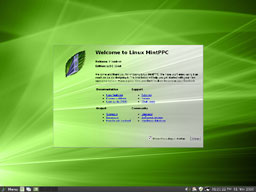 MintPPC
is also directed to desktop users who want a very fast system without
the need to install software themselves, and designed to be both an
easy to use and complete solution.
MintPPC
is also directed to desktop users who want a very fast system without
the need to install software themselves, and designed to be both an
easy to use and complete solution.
The developers say that one advantage of this distribution for
PowerPC users is that a few bugs, which are always present in
Debian/Ubuntu, have been overcome. For example, after installing
MintPPC things like battery status meter, laptop sleep mode and sound
will work out of the box.
MintPPC is not affiliated with Linux Mint but it uses the same
underlying source code. MintPPC was first released as Linux Mint LXDE
Debian Lenny in May 2010. In October 2010 MintPPC 9 was released which
was based on Linux Mint LXDE 9 (Isadora) and Debian Squeeze. Because of
a conflict with the Linux Mint team, the name of the distribution was
changed into MintPPC. MintPPC is developed by Jeroen Diederen
(Linuxopjemac), a Dutch Linux enthusiast who also owns a general
website about running Linux on Macs and by Tony Cygne (Ant2ne), an
American Linux enthusiast.
 Demonstrating how compatible MintPPC is,
check out this list of Macs onto which MintPPC has been successfully
installed:
Demonstrating how compatible MintPPC is,
check out this list of Macs onto which MintPPC has been successfully
installed:
Based on Lubuntu 10.04, Linux 2.6.32, Openbox 3.4.10, LXSession
0.4.3, and Xorg 1.7.5, Linux Mint 9 LXDE features a complete desktop
computing experience while being easy on system resource usage thus
making it suitable for older hardware and situations where speed is a
crucial factor.
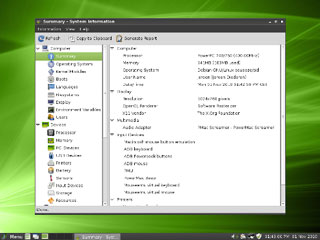 Featured
improvements in this release:
Featured
improvements in this release:
- LXDM, improved PCManFM2 file manager, VLC installed by default,
30,000 applications catalogued and reviewable both online and in the
new software manager, brand new incremental backup tool for both data
and software selection, 3 years support.
- Linux Mint 9 LXDE is the first Mint release to use LXDM as a
display manager. It's smaller and faster than many comparable display
managers and offers excellent localization support. It can also be
themed and is easily configured for automatic login.
- The LXDE file manager has been completely rewritten to offer better
support for mounting and unmounting filesystems, native Trash support,
and autorun when certain types of media are inserted.
- The Software Manager was rewritten from scratch. It features the
best ideas from the original Software Manager, Gnome App-Install and
the new Ubuntu Software Center. It's also much more efficient than the
previous version, handling 30,000+ packages and asynchronous
installation/removal of applications in less than 1,000 lines of
code.
- Number of packages: The Software Manager now features all the
packages available on your system. That's about 30,000 packages to
choose from, compared to around 300 in the previous version.
- Apt daemon: When you install software, you don't have to wait for
the installation to finish. You can browse through the Software Manager
for other applications, or you can simply close the manager. The
installation continues in the background. If you decide to open the
Software Manager again, it will track any ongoing installation
happening in the background and inform you about its progress. At any
time you can cancel an installation and monitor the progress of ongoing
operations.
- Visual improvements: The new graphical interface is inspired from
the Ubuntu Software Center and it uses the Webkit engine to render some
of the screens in HTML/CSS. It uses a single-click navigation system
and lets you browse categories, applications, screenshots and even
websites from the comfort of a single window.
- New Backup Tool - The Backup Tool was also rewritten from scratch.
Linux Mint needed a solid backup tool that would allow you to easily
perform fresh installations without losing what's important to you: Not
only your data, but the selection of software you installed. With this
new tool you can upgrade to new versions of Linux Mint by performing
fresh installations from the CD, you end up with a clean system
containing your data, your preferences and even the software you
previously installed.
- Software selection: The Backup Tool can identify the software you
installed in Linux Mint and save this selection as a list. It can also
restore that selection of software on a different computer or after the
installation of a new version of Linux Mint.
- The Backup Tool identifies the software you added to Linux
Mint
- Incremental backups and compression: The new Backup Tool can check
differences between files in a variety of ways and perform incremental
backups and restorations. It can also archive and compress on the
fly.
- Integrity check: Thanks to an integrity check, the Backup Tool
verifies each file after it's been backed up (this check can be
disabled to make the backup faster).
Documentation: A full tutorial on how to use this Backup Tool guides
you through the process of upgrading Linux Mint to a newer release.
Better look and feel
- Backgrounds: The production of artwork for Linux Mint 9 was
outsourced to provide this release with a choice of quality
backgrounds. The default background is unbranded to give the desktop a
more elegant look and you'll find quality alternative backgrounds
installed by default. Additional backgrounds made especially for Linux
Mint 9 were packaged in "mint-wallpapers-extra" and previous
backgrounds were packaged in "mint-wallpapers-previous-releases". These
packages are available in the repositories.
- Welcome screen: The welcome screen is now rendered in HTML. It
links to the same important resources as before (how to know more about
Linux Mint, where to get help and how to contribute) and it adds links
to the most important parts of the new Linux Mint Community Website,
its collection of tutorials, its idea pool, its software portal and its
hardware database. The new welcome screen is rendered in HTML to give
the desktop a more welcoming look.
- Update Manager: The Update Manager uses a new icon set that
integrates better with the desktop. It also distinguishes between more
error scenarios than before and doesn't consider it an error when it
cannot assess the state of available updates anymore. In previous
versions of Linux Mint, users would see a broken lock when Synaptic was
open, or when the connection to the Internet was down. In Linux Mint 9
the Update Manager only show errors when something is actually wrong
and requires action.
System improvements
- Default software selection: VLC is now installed by default for
media and DVD playback.
- Local repository and Gnome-ppp: Linux Mint now includes a local
repository activated by default. This repository is located in
/usr/share/local-repository and it contains firmware for Broadcom
wireless adapters and Gnome-PPP. You can also add packages to it and
update the repository by running the ./update-repository script in
/usr/share/local-repository.
- Apt hold/held/unhold commands: New functions were added to the
Linux Mint "apt" command. "apt hold", "apt unhold" and "apt held" are
shortcuts to "dpkg - get-selection" and "dpkg - set-selections" which
let you easily hold updates for selected packages.
Link: Linux
MintPPC
Desktop Mac
Deals
Low End Mac updates the following price trackers monthly:
For deals on current and discontinued 'Books, see our 13" MacBook and MacBook Pro,
MacBook Air, 13" MacBook Pro, 15" MacBook Pro, 17" MacBook Pro, 12" PowerBook G4, 15" PowerBook G4, 17" PowerBook G4, titanium PowerBook G4,
iBook G4, PowerBook G3, and iBook G3 deals.
We also track iPad,
iPhone, iPod touch, iPod classic, iPod nano, and iPod shuffle deals.

 Lionel goes on to note that the first
iteration of the temperature sensor issue was introduced in the
Lionel goes on to note that the first
iteration of the temperature sensor issue was introduced in the
 Hardmac's Lionel notes that difficulties associated with
replacing the hard drive in 2011 iMacs led to an initial workaround of
short-circuiting some pins in the power supply of the hard drive, but
that was a bit kludgy, and that some of his readers from Gravis, a
German reseller, developed a more interesting and elegant solution - a
little component to replace the sensor inside the hard drive that can
measure the temperature and send it to the motherboard to regulate fan
speed. It's called
Hardmac's Lionel notes that difficulties associated with
replacing the hard drive in 2011 iMacs led to an initial workaround of
short-circuiting some pins in the power supply of the hard drive, but
that was a bit kludgy, and that some of his readers from Gravis, a
German reseller, developed a more interesting and elegant solution - a
little component to replace the sensor inside the hard drive that can
measure the temperature and send it to the motherboard to regulate fan
speed. It's called  PR: Other World
Computing (OWC) has announced the OWC SuperSlim, a USB 2.0 bus powered
optical drive enclosure for turning any 9.5mm SATA slot loading
internal optical drive, even those with mounting tabs, into an external
Plug and Play CD, DVD, and/or Blu-ray disc burning /playing solution
for Macs and PCs.
PR: Other World
Computing (OWC) has announced the OWC SuperSlim, a USB 2.0 bus powered
optical drive enclosure for turning any 9.5mm SATA slot loading
internal optical drive, even those with mounting tabs, into an external
Plug and Play CD, DVD, and/or Blu-ray disc burning /playing solution
for Macs and PCs. MintPPC
is also directed to desktop users who want a very fast system without
the need to install software themselves, and designed to be both an
easy to use and complete solution.
MintPPC
is also directed to desktop users who want a very fast system without
the need to install software themselves, and designed to be both an
easy to use and complete solution. Demonstrating how compatible MintPPC is,
check out this list of Macs onto which MintPPC has been successfully
installed:
Demonstrating how compatible MintPPC is,
check out this list of Macs onto which MintPPC has been successfully
installed: Featured
improvements in this release:
Featured
improvements in this release:
